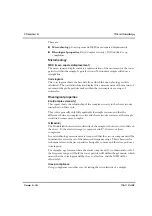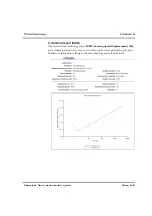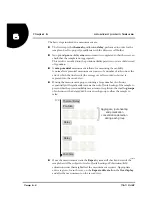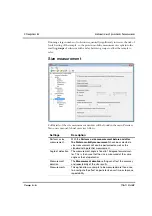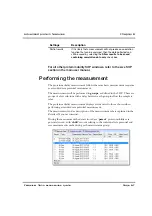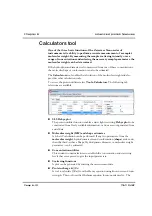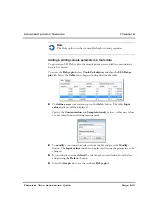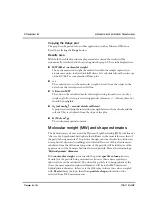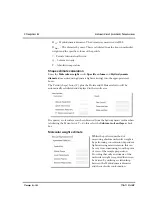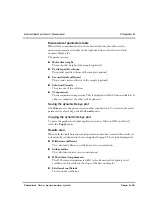
Chapter 6
Advanced protein features
Page 6-10
MAN 0487
Calculators tool
One of the three basic functions of the Zetasizer Nano series of
instruments is its ability to perform accurate measurement of a sample’s
molecular weight. By measuring the sample scattering intensity over a
range of concentrations and entering the necessary sample parameters, the
molecular weight can be determined.
If the hydrodynamic diameter is also measured from one of these concentrations,
the molecule shape or conformation can also be estimated.
The
Calculators
tool
enables the calculation of the molecular weight and also
provides other calculation tools.
To access the protein utilities select
Tools-Calculators
. The following tab
selections are available:
SLS Debye plot
The protein utilities function enables a static light scattering
Debye plot
to be
constructed from freely available information, or from a record generated from
actual data.
Molecular weight (MW) and shape estimates
A ‘what if’ calculation can be performed. If any two parameters from the
molecular weight
, hydrodynamic size and conformation (
shape
) are known,
then the third - either a Shape, Hydrodynamic diameter or molecular weight
parameter - can be estimated.
Concentration utilities
This window contains features to establish the concentration and scattering
levels that are expected to give the input parameters.
Scattering functions
A plot can be generated by entering the measurement data.
Protein charge &
ƒ(Ka)
A tool to calculate
ƒ(Ka)
from the Henry equation using known size and ionic
strength. This tool uses the Ohshima equation for monovalent salts. The
Summary of Contents for Zetasizer Nano Series
Page 2: ......
Page 3: ...Zetasizer Nano accessories guide MAN0487 Issue 1 1 April 2013...
Page 12: ...Chapter 1 Introduction and accessory range Page 1 6 MAN 0487...
Page 42: ...Chapter 2 General cells and cuvettes Page 2 30 MAN 0487...
Page 98: ...Chapter 5 Microrheology Page 5 20 MAN 0487...
Page 125: ......



